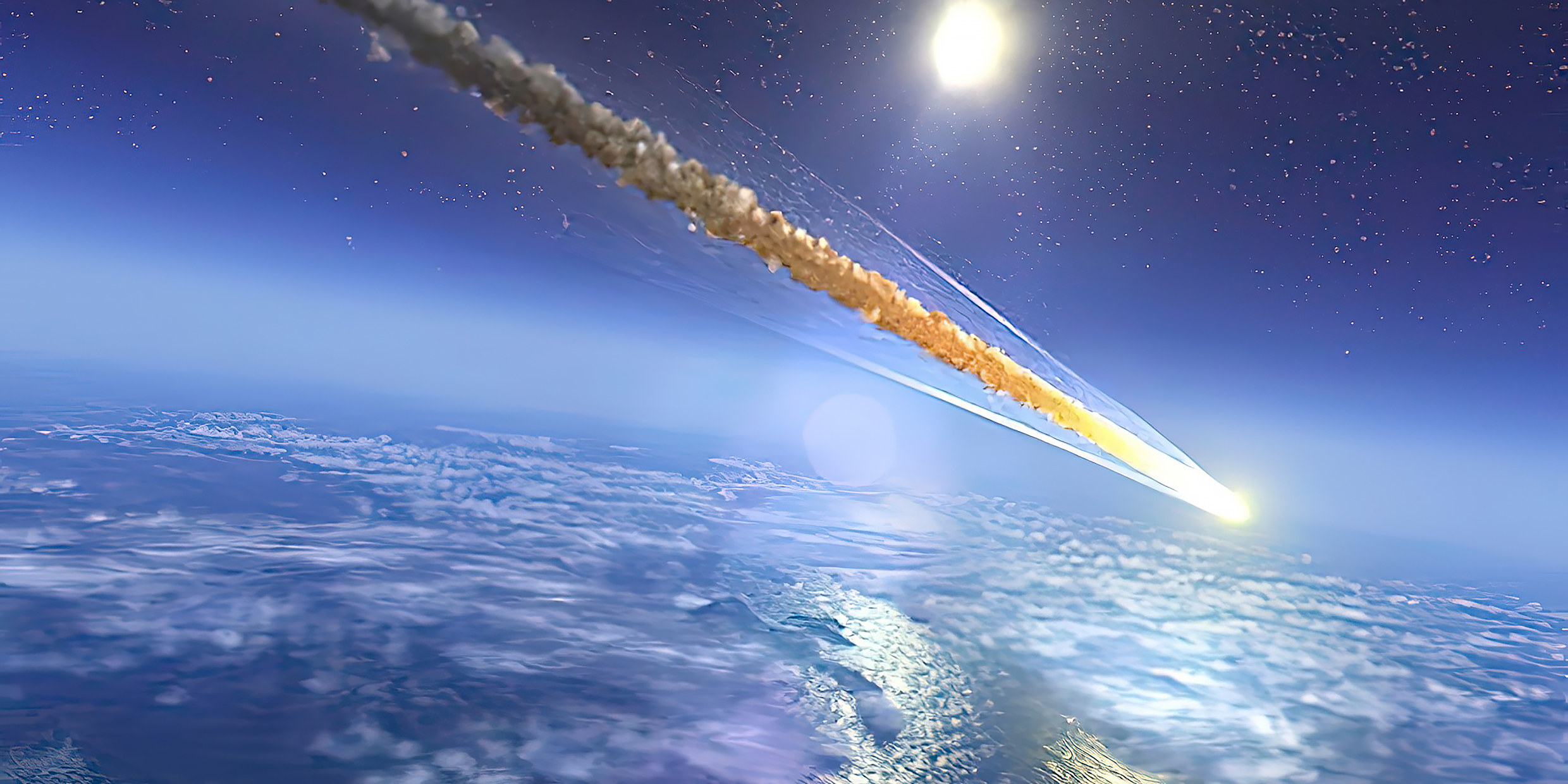Originally published 6 January 1997
Patient: Doc, I’m telling you, my fear has become compulsive. I can’t sleep. Can’t eat. Can’t work. I go around looking up at the sky. Yesterday I was almost run down in the street while gazing upward.
Doctor: Lie down on the couch here, and we’ll talk about it. Make yourself comfortable. Now tell me, when did you first start worrying about asteroids falling from the sky?
Patient: About a year ago. I watched a TV program about the extinction of the dinosaurs. A big chunk of rock smashed into the Earth about 64 million years ago. Blasted so much dust into the atmosphere that the Earth was wrapped in cold and dark for years. Wiped out two-thirds of all plants and animals, including the dinosaurs. It’s all I think about.
Doctor: Hmmm. Sixty-four million years ago. That was a long time ago, wasn’t it?
Patient: Yeah, Doc, I know, I know. But it’s not like it hasn’t happened more recently. Meteor Crater in Arizona is only a few tens of thousands of years old. That blast was 2,000 times stronger than the bombs that wiped out Hiroshima and Nagasaki. Can you imagine if one of those things hit Arizona today?
Doctor: Tens of thousands of years? That’s still a long time.
Patient: The Earth is pockmarked with craters, some younger than the one in Arizona. In 1908, an object 60 meters wide (198 feet) disintegrated in the atmosphere over the Tunguska region of Siberia. Devastated hundreds of square miles of forest. If it had hit above Boston…
Doctor: Siberia?
Patient: Astronomers estimate that a 50-meter object should hit the Earth about every 50 years or so. We’re overdue!
Doctor: Surely that’s a statistical average. It could be a thousand years before the next impact.
Patient: Or 10 minutes! Large asteroids zip past the Earth all the time. In 1989 a 100-meter (328 feet) rock missed us by only 400,000 miles. In early 1991 a large object came within 100,000 miles, and there were other near misses in 1993 and 1994. The meteors and comets we detect are probably only a small fraction of the ones that zip by.
Doctor: Aren’t you forgetting that three-quarters of the Earth’s surface is water? Doesn’t that considerably reduce the chance of a meteor’s hitting land?
Patient: Water! That’s worse. If a 500-meter (1,640 feet) object smashed into the Atlantic, the tidal wave would wash against the Berkshires! We wouldn’t have a chance.
Doctor: Have you considered that your fear might be just a tiny bit irrational?
Patient: Would you be dismissive if I were here because of a fear of flying?
Doctor: Fear of flying is common. Planes go down frequently. Crashes get big play in the media because of the large number of victims. But, you know, the probability of being killed in an airplane crash is 100 times less than in an automobile accident. It’s the hype and calamitous circumstances surrounding air crashes that cause fear of flying.
Patient: Doc, I’ll grant you that impacts like the one that wiped out the dinosaurs are infrequent, but the numbers of people who would be killed make a 747 crash look like small potatoes. The consequences of such an impact could eliminate the entire human population. A smaller, Tunguska-like event might only happen once a century, but is likely to kill tens of thousands.
Doctor: Wouldn’t you say that…
Patient: The astronomers Clark Chapman and David Morrison have worked out the statistics — divided the numbers of probable deaths by the historic frequency of impacts. The probability of being killed by an asteroid or comet is about the same as for an airplane crash. Less than for an automobile accident or homicide, but much greater than a fireworks accident or botulism poisoning.
Doctor: Then you will at least agree that worrying about asteroids is as irrational as fear of flying?
Patient: Doc, we’re not talking about rationality here. If I could deal with this rationally, I wouldn’t be on your couch. We have a government agency, the FAA, that worries about whether airplane travel is safe. We have laws to keep me safe from fireworks and botulism, both of which are far less likely to kill me than an asteroid or comet. But who’s worrying about rocks from the sky?
Doctor: Have you considered…
Patient: Chapman and Morrison estimate that a Tunguska-like event will happen at least once each century, and with current population densities kill 10,000 people. A 200-meter object will on average hit every 10,000 years and cause 100,000 fatalities, or five times that many if it hits in the ocean. A one-kilometer object will collide with Earth every 200,000 years and kill 20 million — or possibly 20 billion. It’s been a long time since…Doc, Doc…
Doctor: Uhh, yes?
Patient: Why do you keep glancing upwards?
In 2013, an estimated 20-meter object exploded over the Chelyabinsk region of Russia, producing a shockwave that shattered windows and caused injuries over an area 100-kilometers wide. The meteor went completely undetected prior to impact with the Earth’s atmosphere. ‑Ed.



